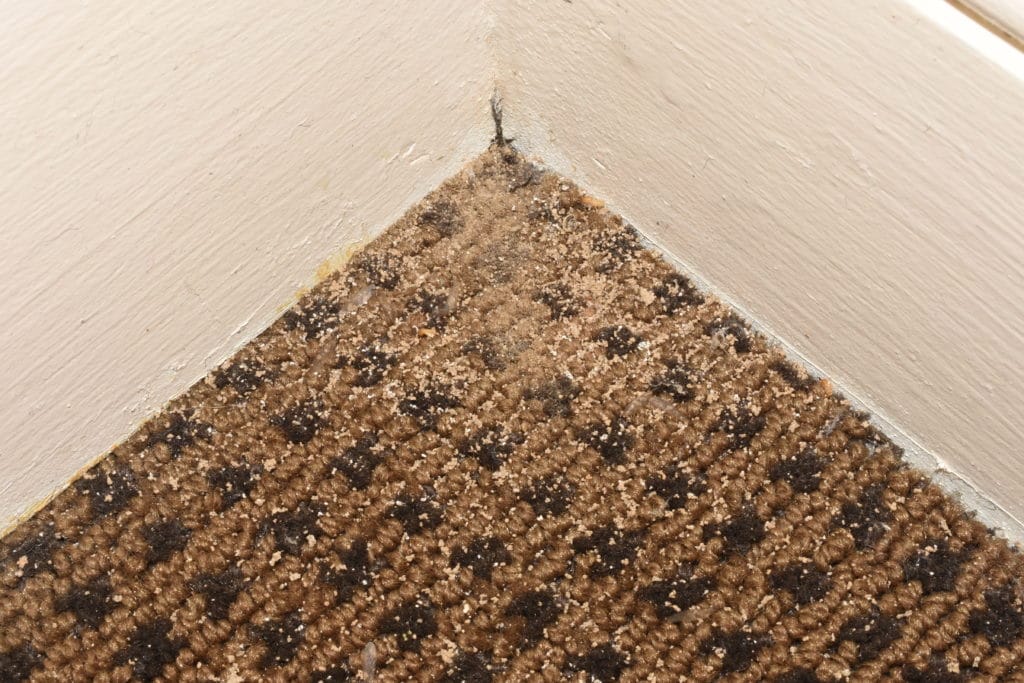Table Of Content
Given their size and the concealed nature of their activities, worker termites are less likely to be spotted than other castes. The second option for treating termites when working with an exterminator is bait. The termite that finds the wood eats it, then takes the food back to its colony for the rest to feed on. That’s why we’ve pulled together this guide on the 7 telltale signs of termites. So you can tell when termites have moved in and save your home some potential damage. Unlike some other pests, termites aren't easy to eliminate on your own.
What’s Eating Your House?
Useful in houses with inaccessible crawl spaces or slab foundations, where termites can sneak up through cracks into interior walls. Most any breed can be trained to sniff out the methane termites emit as they digest wood. Streams of winged termites indoors (or piles of shed wings) almost always means your house is infested.
Costly 'mistake' leaves new homeowners $100k out of pocket - Yahoo News Australia
Costly 'mistake' leaves new homeowners $100k out of pocket.
Posted: Sat, 16 Mar 2024 07:00:00 GMT [source]
Wood damage
The vast majority of termites have white or cream-colored bodies. Almost all worker termites lack pigmentation, and workers make up most of a colony. Most termite soldiers have white bodies, but their heads are darker. Remember, though, that spotting white termites outside their tunnels is rare. Termite swarmers start life with the pale, wingless bodies of worker termites. However, they eventually undergo a transformation that sets them apart.
You see insects that look like white ants.
In case they already have, or you find evidence of terminates on your deck, call an exterminator. In the meantime, you can spray termite-killing chemicals around the exterior of your home and your deck. While you can't completely DIY a termite killing, you can typically kill enough of them to keep you in the clear until reinforcements arrive. You can do this yourself by making sure vents aren’t blocked by vegetation. Pest control professionals can install further measures that reduce moisture and humidity in your crawl spaces. Drywood termites, on the other hand, are harder to detect and are most common in the Southeast and Southwest regions of the U.S.
To come out ahead, it is essential to be vigilant and identify the signs of termite presence in your home early. The most obvious sign of a termite infestation to look out for is a swarm. During a swarm, you will see thousands of insects all over your home, covering every surface in some rooms. In these instances, you need to call an exterminator right away. Yet sometimes, the signs that these pests have moved in can be more subtle.
How to Identify Termite Infestation
Homeowners can take some initial steps to try to keep termites out of their house. If you’re dealing with a termite problem, or suspect you might be, you’re probably also wondering how these termites found their way to your home. Once a termite colony has reached maturity, swarmers—or reproductive adult termites—begin to leave their colonies to find a mate and start a new colony somewhere close by.
Your doors and windows are hard to open
In older homes, the damage might even be from termites that have long since moved on. From there, you can determine if you need an exterminator or just need to begin making repairs. As spring approaches and the ground begins to warm across the country, termite populations will emerge in search of new structures to invade. Once swarmers have determined your home to be a good fit, it’s likely that the rest of the termite colony will follow, resulting in a full-blown termite infestation. It's important to look for signs of termites besides mud tubes on your foundation or ceilings.
hollow wood
If it sounds hollow, it is likely termites have eaten away at it. A good way to confirm this is by inspecting your electrical fittings and power points. If you spot a build-up of earthy materials such as damp mud or soil, you may have a termite problem. If there are tunnels, that’s a sure sign of termites in your house. As termites make their way through your home, they eat away channels and tunnels for their own personal transportation routes.

How to Get Rid of Termites In Your Home, According to a Professional
Feasting on a diet of cellulose, termites can quickly work their way through all kinds of wooden features and furniture, not limited to decks, beams, floorboards and walls. That means there’s the potential for structural damage over time too. So the sooner you know about these pests and learn how to get rid of them, the better. If you notice that your doors and windows are suddenly hard to open, it could be termites.
This swarm usually happens around spring and early summer months. The exact timing can vary from year to year because of environmental factors like moisture, heat and the changing length of days. Eradicates drywood termites, the satellite nests of Formosan termites, and many wood-boring beetles. The house is wrapped in a tent (the same as for fumigation), then hot air is pumped in until the center of the framing lumber reaches 120° for at least half an hour. The treatment is fast — one day from start to finish — and the house can be reoccupied immediately.
Termites are used to hiding from birds and other predators, Webb says, and they don’t even like to interact with other insects.
The nature of the damage will vary depending on the type of termite. Brionna is a writer specializing in home improvement, construction, and real estate topics. She leverages her background as a civil engineer and interior decorator as well as her love for all-things-home to help readers better understand their home.

No comments:
Post a Comment